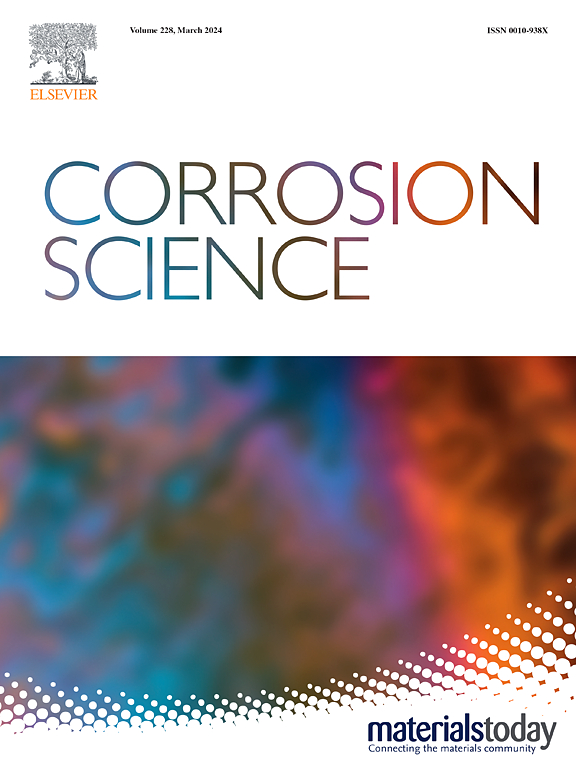The corrosion behaviors of Inconel 718 fabricated by additive-subtractive hybrid manufacturing in marine environment
IF 7.4
1区 材料科学
Q1 MATERIALS SCIENCE, MULTIDISCIPLINARY
引用次数: 0
Abstract
Due to the different timing of the intervention in subtractive manufacturing (SM), additive-subtractive hybrid manufacturing (ASHM) primarily includes two subtractive methods: high-temperature milling (HTM) and room-temperature milling (RTM). In the present work, the passive film characteristics and corrosion behavior of Inconel 718 samples prepared by additive manufacturing (AM) and ASHM (including HTM and RTM) were investigated using microstructural, residual-stress, electrochemical, and X-ray photoelectron spectroscopy analyses. Due to the formation of nano-grained microstructure and residual compressive stress introduced by AM, the ASHM-fabricated samples did not undergo obvious stress corrosion cracking after polarization reaction. Furthermore, a significant increase in grain boundary density led to a higher proportion of oxides in the passive film of ASHM-fabricated samples than that of AM-fabricated one, thus improving the film’s compactness and chemical stability. Compared to AM and HTM samples, RTM sample showed the highest grain boundary density, thickest passive film, minimal defects, and superior overall corrosion resistance.
增减复合制造法制备的Inconel 718在海洋环境中的腐蚀行为
由于减法制造(SM)的干预时间不同,增材-减法混合制造(ASHM)主要包括两种减法方法:高温铣削(HTM)和室温铣削(RTM)。本文采用显微组织、残余应力、电化学和x射线光电子能谱分析研究了增材制造(AM)和ASHM(包括HTM和RTM)制备的Inconel 718样品的钝化膜特性和腐蚀行为。由于AM引入的残余压应力和纳米微观结构的形成,使得ashm制备的样品在极化反应后没有发生明显的应力腐蚀开裂。此外,晶界密度的显著增加导致ashm制备的钝化膜中氧化物的比例高于am制备的钝化膜,从而提高了膜的致密性和化学稳定性。与AM和HTM样品相比,RTM样品具有最高的晶界密度、最厚的钝化膜、最小的缺陷和更强的整体耐蚀性。
本文章由计算机程序翻译,如有差异,请以英文原文为准。
求助全文
约1分钟内获得全文
求助全文
来源期刊

Corrosion Science
工程技术-材料科学:综合
CiteScore
13.60
自引率
18.10%
发文量
763
审稿时长
46 days
期刊介绍:
Corrosion occurrence and its practical control encompass a vast array of scientific knowledge. Corrosion Science endeavors to serve as the conduit for the exchange of ideas, developments, and research across all facets of this field, encompassing both metallic and non-metallic corrosion. The scope of this international journal is broad and inclusive. Published papers span from highly theoretical inquiries to essentially practical applications, covering diverse areas such as high-temperature oxidation, passivity, anodic oxidation, biochemical corrosion, stress corrosion cracking, and corrosion control mechanisms and methodologies.
This journal publishes original papers and critical reviews across the spectrum of pure and applied corrosion, material degradation, and surface science and engineering. It serves as a crucial link connecting metallurgists, materials scientists, and researchers investigating corrosion and degradation phenomena. Join us in advancing knowledge and understanding in the vital field of corrosion science.
 求助内容:
求助内容: 应助结果提醒方式:
应助结果提醒方式:


